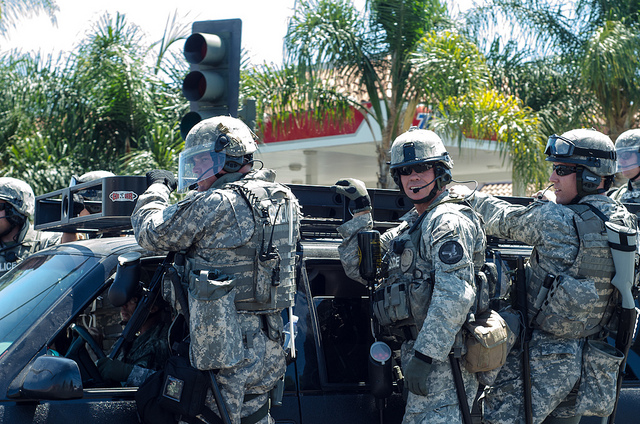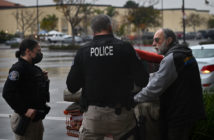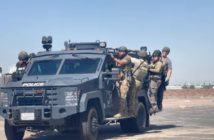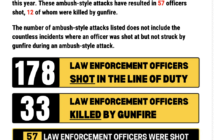The militarization of policing has been all over the news. There seems to be something deeply disturbing to politicians and some community activists about the equipment officers are driving and what they are wearing. Remember this isn’t about what they’re doing. It’s about how it looks.
A quick history lesson is in order.
Specialized tactics teams have been around for some time. They formed in response to a need to professionalize police response to major incidents. From the beginning it became apparent that nice wool uniforms weren’t the most efficient clothing to be wearing when crawling around bushes and rooftops. So a more military type uniform was adapted. Made sense, and no one seemed to be all that upset.
Then came 9/11 — a landmark event in American history and in the profession of policing. Seemingly overnight, an assessment was made of the state of American police forces to address the issue of terrorism and it was found that they were woefully underprepared. Millions of dollars were spent getting agencies up to speed to prepare for the worst-case scenario. It didn’t matter if you were in Fargo, N.D. or Los Angeles — you were expected to be ready. The politicians and public demanded it.
This made it necessary to ramp everything up. The specific mission was to be able to respond in such a manner that saved lives and mitigated the impact of a terrorist attack. A quick look around the world found that the active-shooter scenario was a terrorist act of choice.
Weaponry and training were adapted to meet the potential threat. But apparently our American ADD culture has quickly forgotten why police deployment strategies changed.
Today, officers use armored hostage rescue vehicles almost daily throughout the country to handle volatile situations. These vehicles give officers the protection they need.
Just last week, the LAPD deployed an armored vehicle in order to deal with a subject using an assault rifle loaded with a drum-barrel magazine. For those who aren’t weapons specialists, this means the suspect in this case had more potential firepower than the police officers. Thankfully, officers were able to resolve this dangerous situation because of great tactics and the right tools. Even so, one officer was seriously wounded with possibly career-ending injuries from a gunshot wound.
Which brings us to rifles. I believe most of the citizenry wants police officers who are able to respond with enough firepower to mitigate whatever circumstances they encounter. Whether you are dealing with an active shooter in a school or a barricaded robbery suspect, patrol rifles are substantially more effective than six- shot revolvers.
Uniforms, by the way, are simply a matter of practicality. They are very durable and there are lots of pockets, and a helmet is worn for protection. Ballistic vests are to protect against taking a shot, and armor protection is worn in case projectiles are thrown.
All of this equipment makes sense and is very practical for today’s modern policing. I agree departments have to be judicious in the deployment of special tactics personnel. In most circumstances they are amongst the most highly trained and disciplined members of the department. You need to use the right tool for the right job.
If politicians and community activists are judging policing simply because of the way cops look, they are missing the most important part of the equation. Individual officers put on those uniforms and step in harm’s way not for themselves but for the public they serve. The basic character and integrity of an officer doesn’t change simply because of what he’s driving or the uniform he’s wearing. That is the most critical factor in this debate and the least talked about.
Joe is a retired Anaheim Police Department captain and its first public-information officer. He can be reached at jvargas@behindthebadgeoc.com
Photo courtesy of Chase Carter
 Behind the Badge
Behind the Badge




